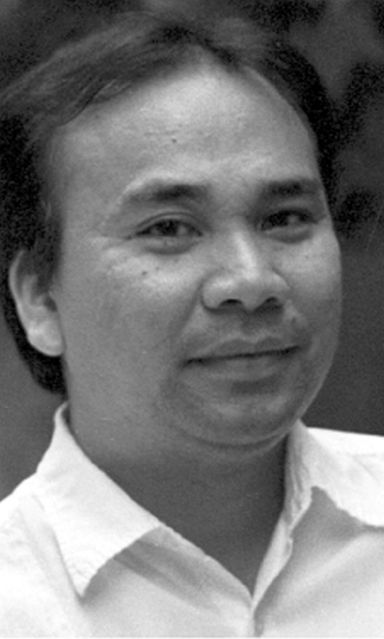
BERSALES
Nearly two weeks and 50 years ago, at around 3:45 in the afternoon of April 23, 1967, first lady Imelda Romualdez Marcos and USC president Fr. Rudolf Rahmann, SVD, formally inaugurated the University of San Carlos Museum.
This was about an hour away from the start of graduation rites held just outside the museum with president Ferdinand Marcos as commencement speaker.
The occasion was a historic moment that marked the culmination of over a decade of archaeological, zoological and botanical fieldwork carried out all over the Visayas and Mindanao by Filipino and German scholars based at USC.
(Let me dedicate this piece therefore to the museum and at the outset warn the readers that, as head of the museum, this piece will be quite biased for which I beg for the reader’s indulgence.)
Although it was just a mere formality — an exhibition of archaeological artifacts and biological objects having been opened to the public since the 152 or thereabouts — this is the official date that marks the birth of the museum in post-war years.
There was actually an earlier museum, a very large room full of cabinets of curiosity — the museums of two centuries ago — that was opened in 1908 by the Vincentian priest Pedro Julia at the original campus of the Seminario-Colegio de San Carlos, USC’s ancestor.
This was then located at the sprawling campus beside Plaza Independencia (where that building housing Friendly Care now sits down to the still extant two-storey wooden Madrigal Oil Mills Building near Pier 1).
We do not know whether that museum was moved when the secular college was separated physically from the seminary in 1931, with the transfer to the old Imus property, later expanded by the Divine Word Missionaries who took over the same site in 1935 at what is now the Downtown Campus (formerly USC Main Campus).
If it did, then it was one of the many victims of the early American liberation bombing runs that hit the campus buildings on Sept. 12 and 14, 1945.
Be that as it may, when the USC Museum was inaugurated in 1967, it was but a mere two classrooms and one more room (serving as a research lab and curatorial office).
Today the museum occupies virtually the entire ground floor wings of the Arthur Dingman Building on P. Del Rosario Street at the Downtown Campus.
An inventory conducted in 1988 by former USC Museum curator Jane Calderon-Hayhow, assisted by another former curator, Malou R. Samson, placed the entire museum collection at that time to 9,606 artifacts, objects and specimens.
The biggest share covers the museums’ greatest strength, its archaeological collection, which totals to something like 6,940 pieces from the smallest stone tools dating to thousands of years ago, collected from Napo, Carcar, to large Chinese brownware jars from caves in Samar and elsewhere, collected by Dr. Karl Hutterer and Dr. Rosa C. P. Tenazas.
The heaviest artifact in the collection is one 500-kilo stone carved with faces, from Negros Oriental, which may date to the first millennium or even more. The largest ceramic collection in the museum comes from the 1967-68 USC-Locsin archaeological excavations at Pinagbayanan in Pila, Laguna, where 381 burials were systematically recovered, yielding thousands of porcelain and stoneware pieces dating from the Song Dynasty (ca.1100s) to the early Ming Dynasty period (ca. 1400s).
The museum’s heaviest and most important indigenous (non-foreign trading) collection comprise about 287 limestone burial urns excavated from two caves in the Kulaman Plateau (now part of Sarangani) by Dr. Marcelino Maceda in the early 1960s.
Most are in storage but the 25 or so on display show covers that have phalluses carved on them, for males, and breasts on the sides of the urns, probably for the female burials they once contained.
The museum also boasts of 634 ethnographic objects from the indigenous peoples of Mindanao, collected by Dr. Marcelino Maceda, Dr. Rogelio Lopezand Fr. Rahmann in the 1950s and 60s.
There are also 121 pieces of Spanish-era ecclesiastical objects collected by Fr. Jan Pieter Raats and former curator Leonisa Ramas, among others, in time for the 1965 celebration of the Fourth Centenary of the Christianization of the Philippines.
The latter includes a section of the original late 1700s, early 1800s retablo of the Virgen de Regla (Birhen sa Regla) of the old Opon Church, which was unceremoniously destroyed in the 1960s.
This retablo and most of the ecclesiastical collection are now housed on the opposite wing of the museum, at its newest galleries dedicated to an astounding private collection entitled, “Handumanan: The Rosita R. Arcenas Collection of Bisayan Santos.”
One of the 50th anniversary activities of the museum will be to open to the public for the first time the other half of the Arcenas galleries, an exhibition entitled, “Bahandi:
The Rosita R. Arcenas Collection of Chinese and Southeast Asian Ceramics” on Saturday, May 20 at 10:30 in the morning. And because the museum has started collecting Japanese ceramics, a parallel exhibition entitled, “Rhapsody in Blue: Japanese Sometsuke Porcelain from the late Edo to Early Showa Periods, 1800-1950” will also be unveiled at the Changing Exhibitions Gallery of the museum.
I am almost as old as USC Museum and I am glad to see it reached this long, thanks to the continued privilege that the SVD missionaries who run USC, have afforded it. May the tribe of museums of this kind increase!